Kobilka Cryo-Electron Microscopy Center Inaugurated

On July 22, KOBILKA Cryo-Electron Microscopy Center of The Chinese University of Hong Kong, Shenzhen , was inaugurated, marking a new stage for CUHK-Shenzhen in the research of structural biology and medicine development.
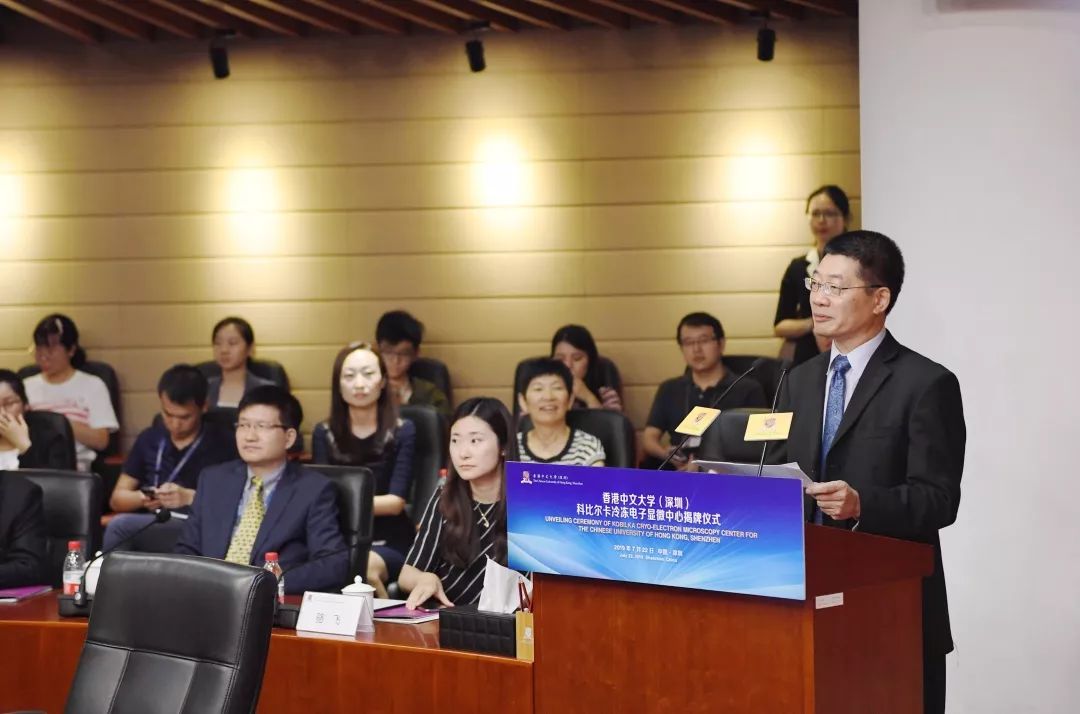
Prof. Ye Dequan, Dean of The School of Life and Health Sciences, presiding over the ceremony
Supported by the Shenzhen Municipal Government and Longgang District Government, the Kobilka Institute of Innovative Drug Discovery of the CUHK-Shenzhen was established in 2017.
The center is the first research and teaching platform for structural biology in Longgang.
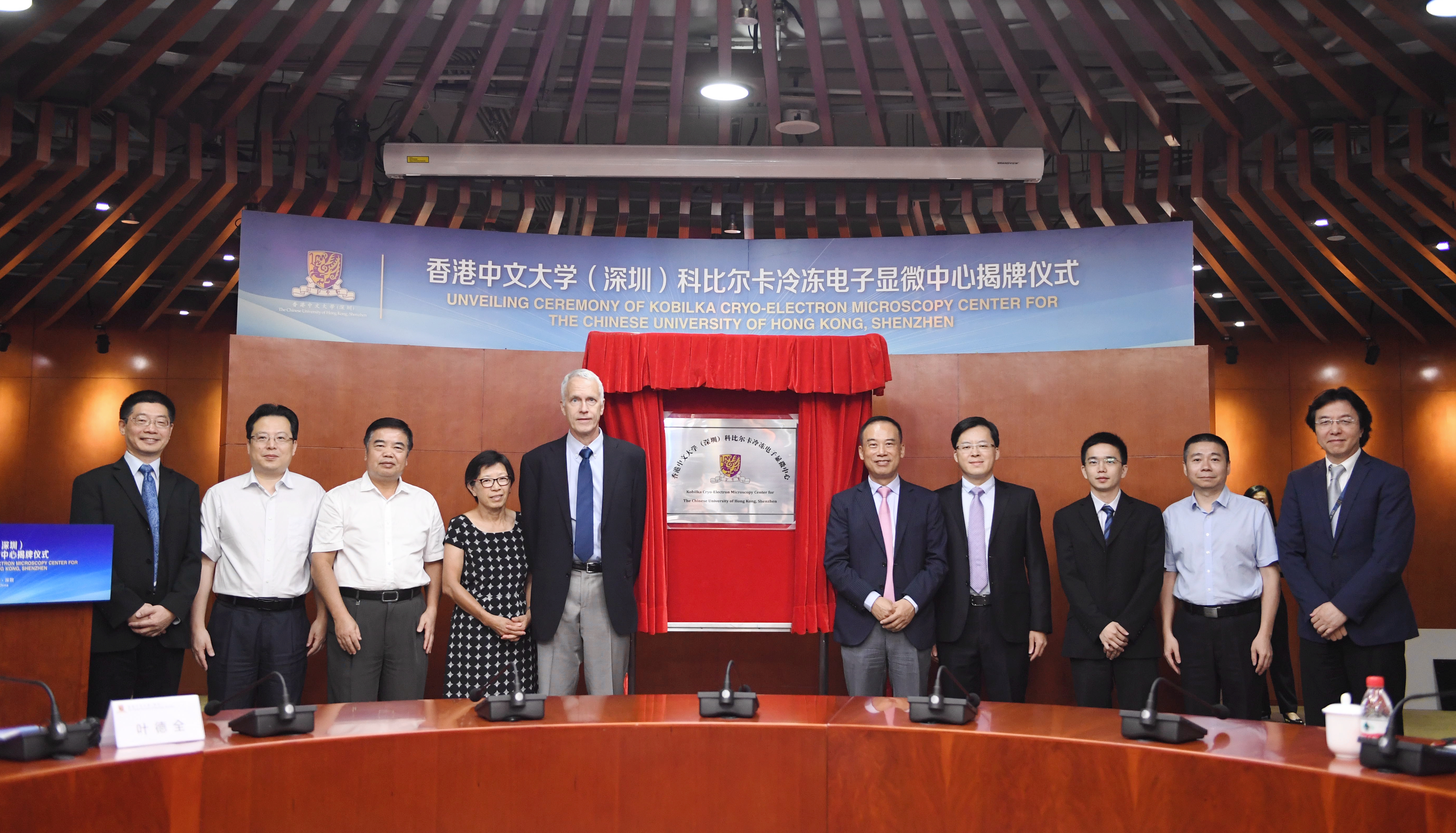
Group photo of Prof. Brian Kolbilka with his wife, Prof. Yangsheng Xu, Deputy Secretary general Zhuowen Li, Deputy Head of District Guangwen Chen, Deputy Director Huan Cao, Deputy Direfctor Xiong Zhao, Chairman Guangliang Luo, Prof. Baoting Zhu, Prof. Dequan Ye
Cryo-Electron Microscopy (Cryo-EM) has been widely applied in determining the structures of biological samples and polymer materials and has become an indispensible device for developing biological medicine and research protein structures and functions.
Simply speaking, Cryo-EM can freeze molecules in order to help see their structures clearly. The structural information can then be used to design new medicine, according to Ye Dequan, director with the life science college of the CUHK-Shenzhen.

Deputy Head of Longgang District Guangwen Chen addressing the audience
Cryo-Electron Microscopy (Cryo-EM) has been widely applied in determining the structures of biological samples and polymer materials and has become an indispensible device for developing biological medicine and research protein structures and functions.
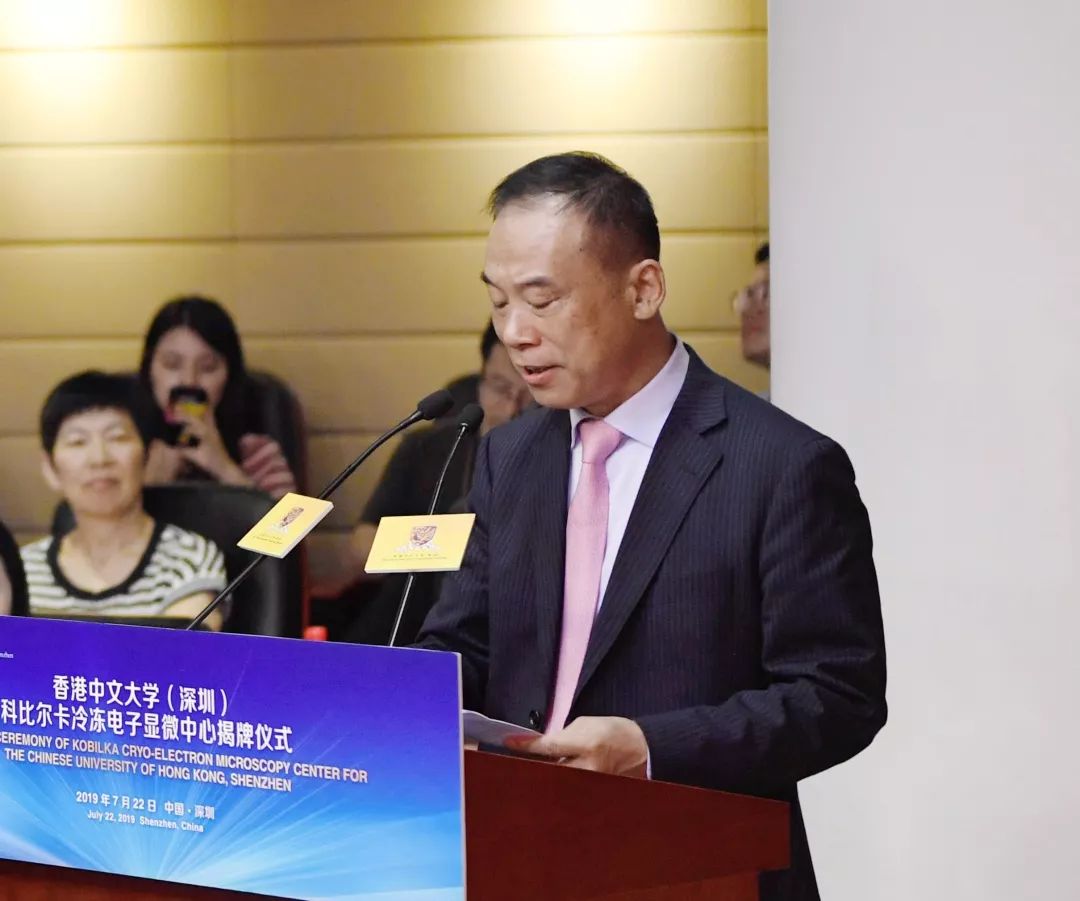
Professer Yangsheng Xu addressing the audience
Simply speaking, Cryo-EM can freeze molecules in order to help see their structures clearly. The structural information can then be used to design new medicine, according to Ye Dequan, director with The School of Life and Sciences of the CUHK-Shenzhen.

2012 Nobel Prize Laureate in Chemiry Prof. Brian Kolbilka addressing the audience
Kobilka said that the development cycle of a new medicine normally takes eight years on average from the launch of the research to being approved by supervision authorities.
"Many attempts of new medicine fail in the end. The establishment of the center will help to shorten the period and to increase the success rate by facilitating researches of the receptors' structure of hormone and neurotransmitter with the help of Cryo-EM," said Kobilka.
"Medical science has been a key item in the Guangdong-Hong Kong-Macao Greater Bay Area. The establishment of the center will not only help the development of relevant basic researchers but also play a role in transferring research results into industries," Xu Yangsheng, president of CUHK-Shenzhen, said at the ceremony.
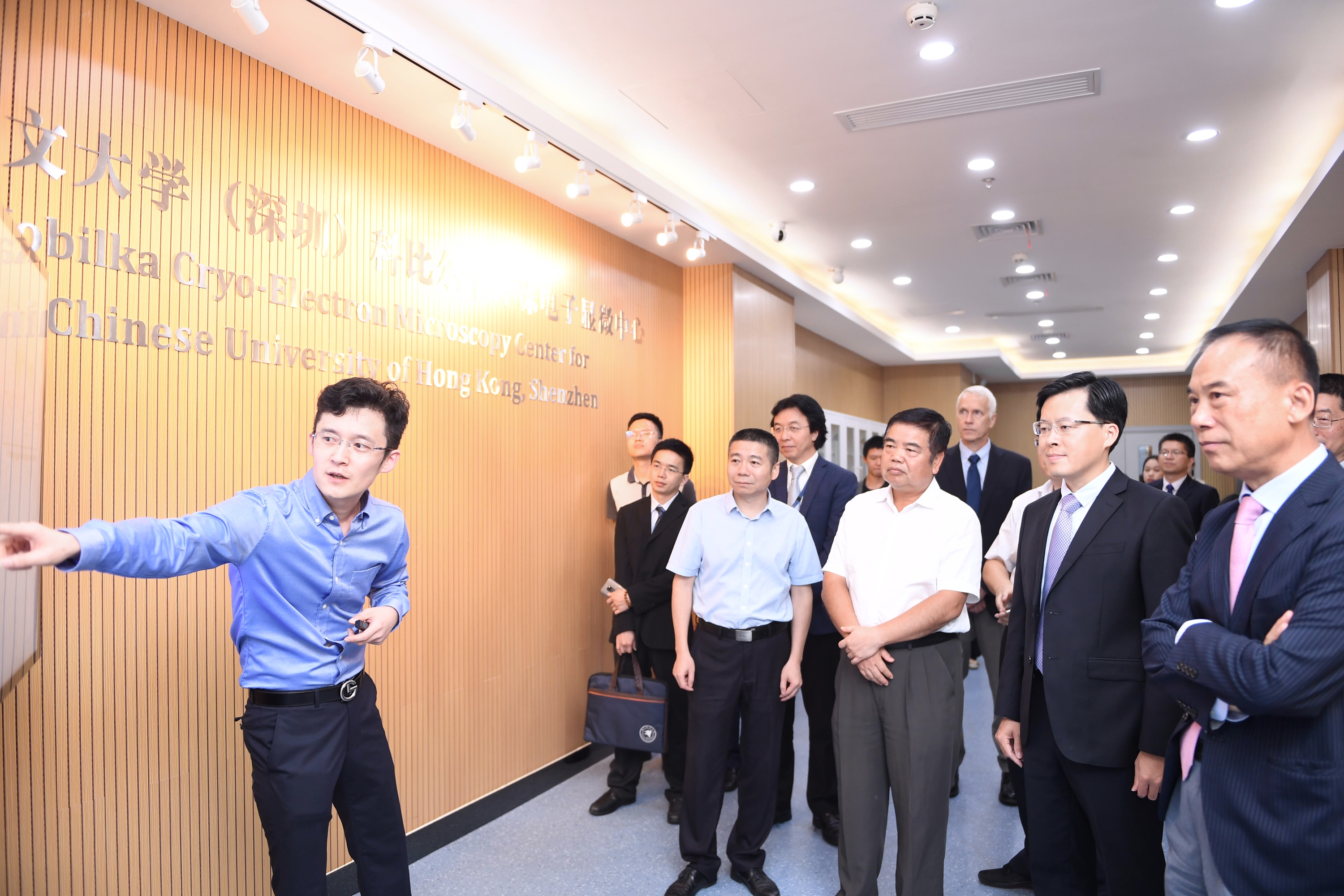
Guests and University Senior Administration Staff visiting the Lab

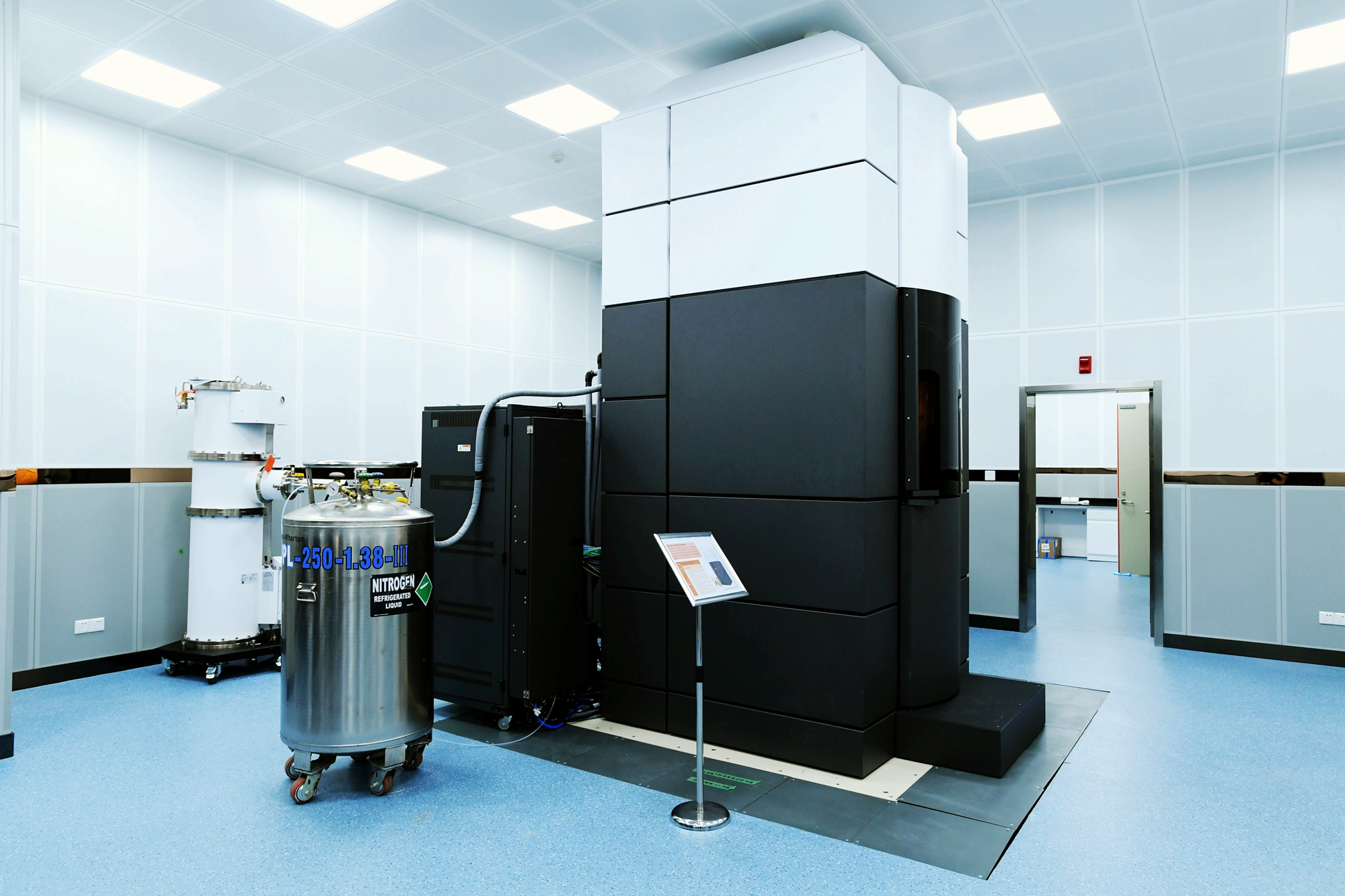
KOBILKA Cryo-Electron Microscopy Center of The Chinese University of Hong Kong, Shenzhen
In the future, the center will also be open for enterprises and institutions in relevant industries, according to Chen Wenguang, deputy head of Longgang District Government.
For more about the ceremony, please click the link below:
https://v.qq.com/x/page/a09024dg6on.html
Shenzhen Daily








